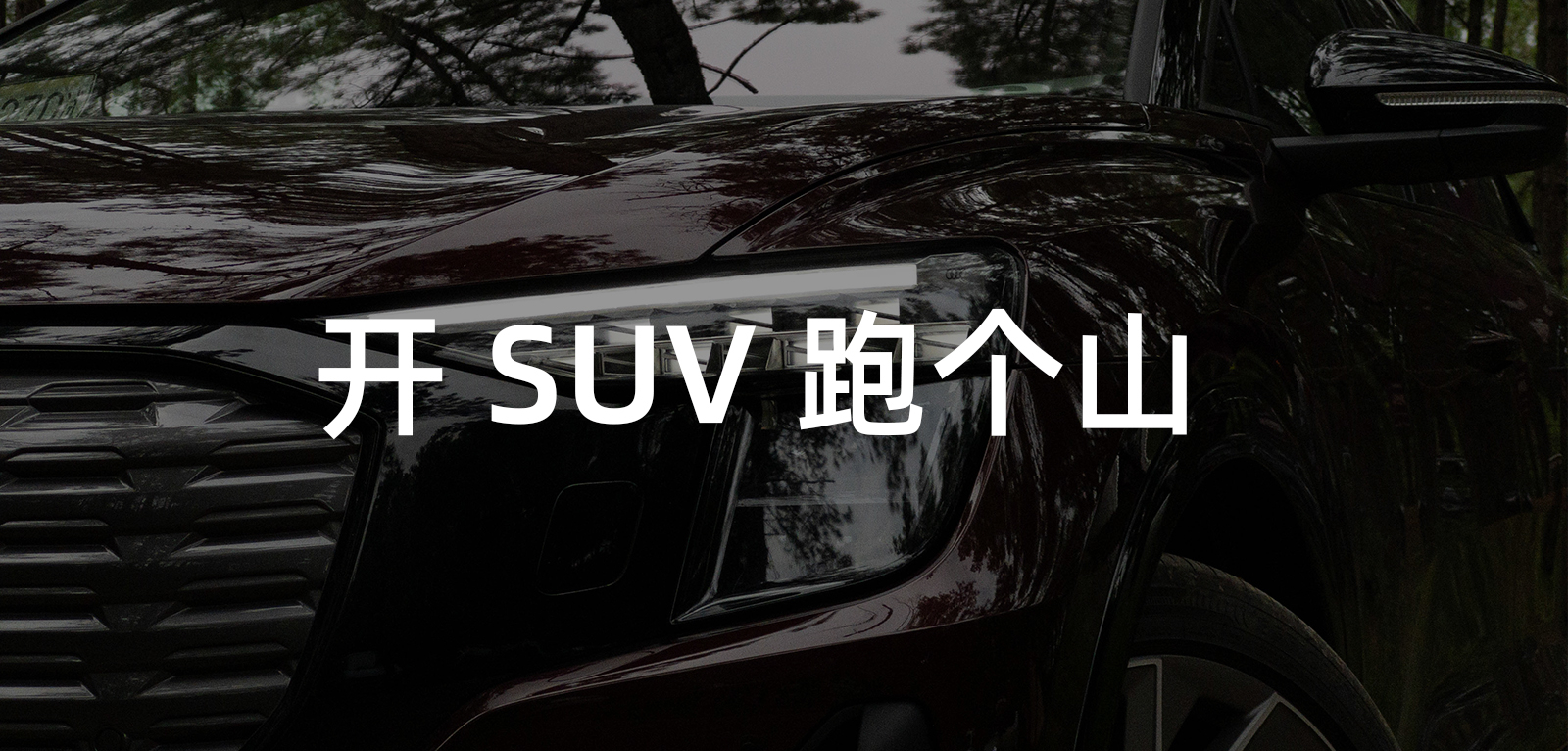Meet the “Q5 e-tron”
As the Mid-Autumn Festival approaches, the weather in southern China has gradually become cooler. Taking advantage of this pleasant weather, SAIC Audi hosted a media test drive for the Q5 e-tron in the steep mountains of Anji.

Although brands such as BBA like to use electric vehicles as a new series under their umbrella, such as BMW’s BMWi, Mercedes-Benz’s EQ series, and Audi’s e-tron, they tend to distinguish between their fuel vehicle product lines and electric vehicle product lines using this strategy.
The car we test drove today is the Q5 e-tron. According to the naming rules above, many people may mistake it for a gasoline to electric-powered version of the Q5.
But it actually has little to do with the gasoline-powered Q5. The chassis architecture is different, and even the body size is longer than that of the Q5L. However, its starting price of 376,500 RMB is slightly lower than that of the Q5L.
For SAIC Audi, this car is their first pure electric SUV, developed on the Volkswagen MEB platform, just like the ID.6, with the same wheelbase and body length.
In fact, we have already explained the details of the Q5 e-tron before, and you can click the link to see our previous content about the specifications and configurations.
Shifting down twice, not only does the gas car feel the drag, but also the Q5 e-tron
An “Audi” that doesn’t look like an electric car
The model we test drove is the “50 e-tron quattro mecha kit” version, with a paint color of “Guanjiang Red.” Compared to other colors, this color gives a sense of calmness and elegance. Especially in the dense forested hills, the deep dark color and the rich reflection of the tree leaves make the paint look particularly textured.
The mecha kit brings a large number of black exterior parts to the car, which, combined with the deep Guanjiang Red, makes the car visually uniform. It also helped to weaken the presence of the front grille.
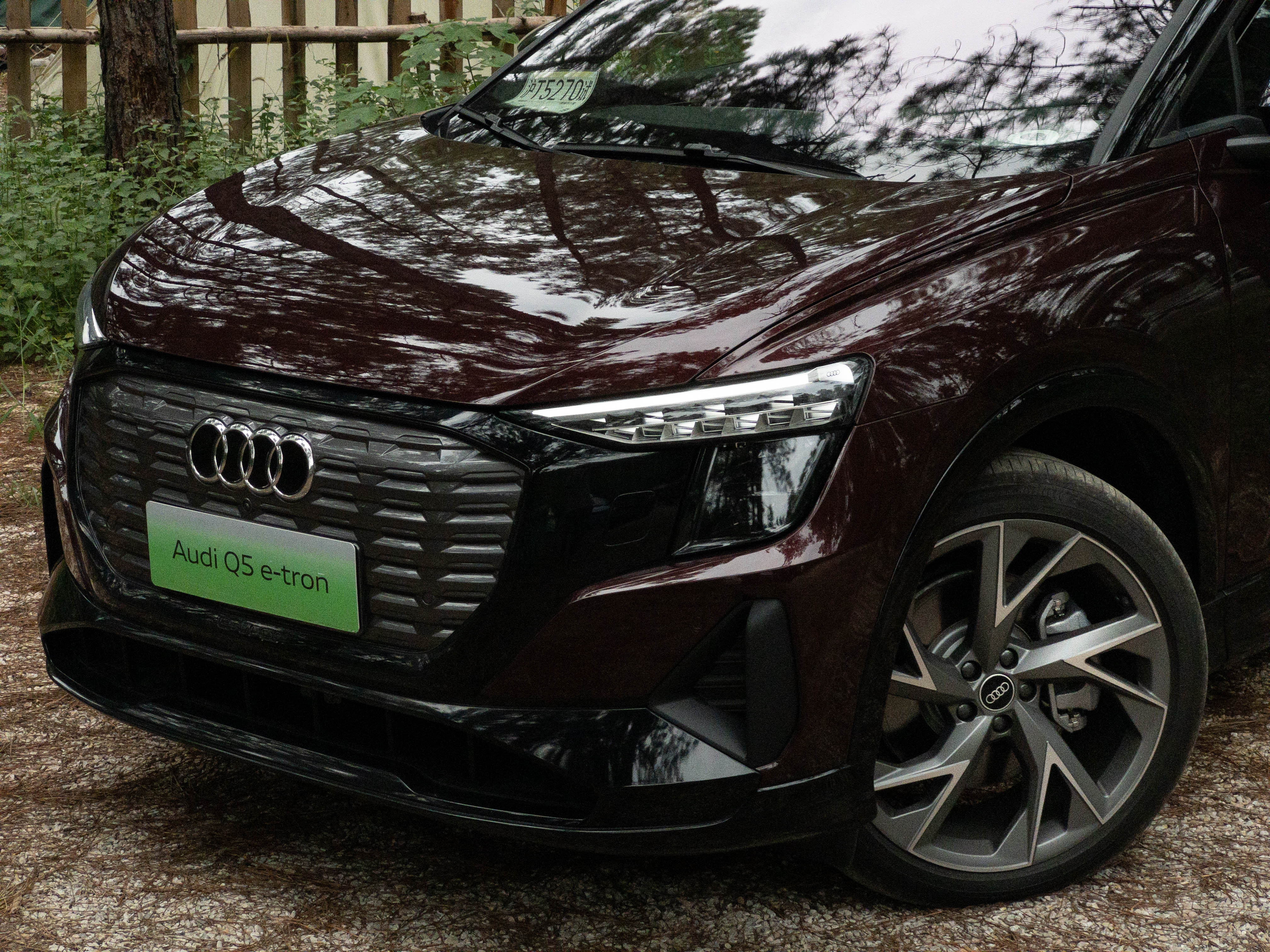 At first glance, this car doesn’t have any particularly obvious “electrification features” except for the prominent green license plate. The huge hexagonal front grille is in line with Audi’s family design and only reveals that it is closed when you get close to the car.
At first glance, this car doesn’t have any particularly obvious “electrification features” except for the prominent green license plate. The huge hexagonal front grille is in line with Audi’s family design and only reveals that it is closed when you get close to the car.
However, even with the closed structure, the matrix-shaped dot-matrix design is still used in the styling. The real radiator grille of the car is hidden below the license plate.
Overall, although this car is based on an electric car, it still looks very “Audi”.
Another electric feature that can only be noticed from the back comes from the “e-tron” logo that can be seen everywhere around the car body, which emphasizes its electrification genes at all times. Under the support of the mecha suit, these logos are not prominent, but instead have a restrained feeling of low-key introversion.
Another highlight of the exterior is the traditional skill of being a “light factory”.
The daytime running lights are divided into two layers, with the upper layer being a fixed uniform light strip, and the lower layer offering custom options by Audi. By using two rows of 16 lights, 4 different shapes can be formed. Compared to conventional headlight designs, customizable headlight groups are very eye-catching.
Entering the interior, the stronger Audi flavor comes out. The black technology-oriented interior of Audi is very harmonious in this car.
What’s eye-catching is the design of the four-spoke steering wheel, which looks very sporty with its hexagonal shape. Moreover, the chrome-plated decoration in the middle circle does not feel like cold metal when touched, which greatly improves the tactile sensation in extreme hot and cold weather.
In terms of detail processing, the steering wheel integrates physical buttons with touch functionality. Compared to the pressure-sensing + vibration feedback design used by many cars now, the former is still better in terms of experience. The latter often has some delay in actual experience, which can make the operation less coherent.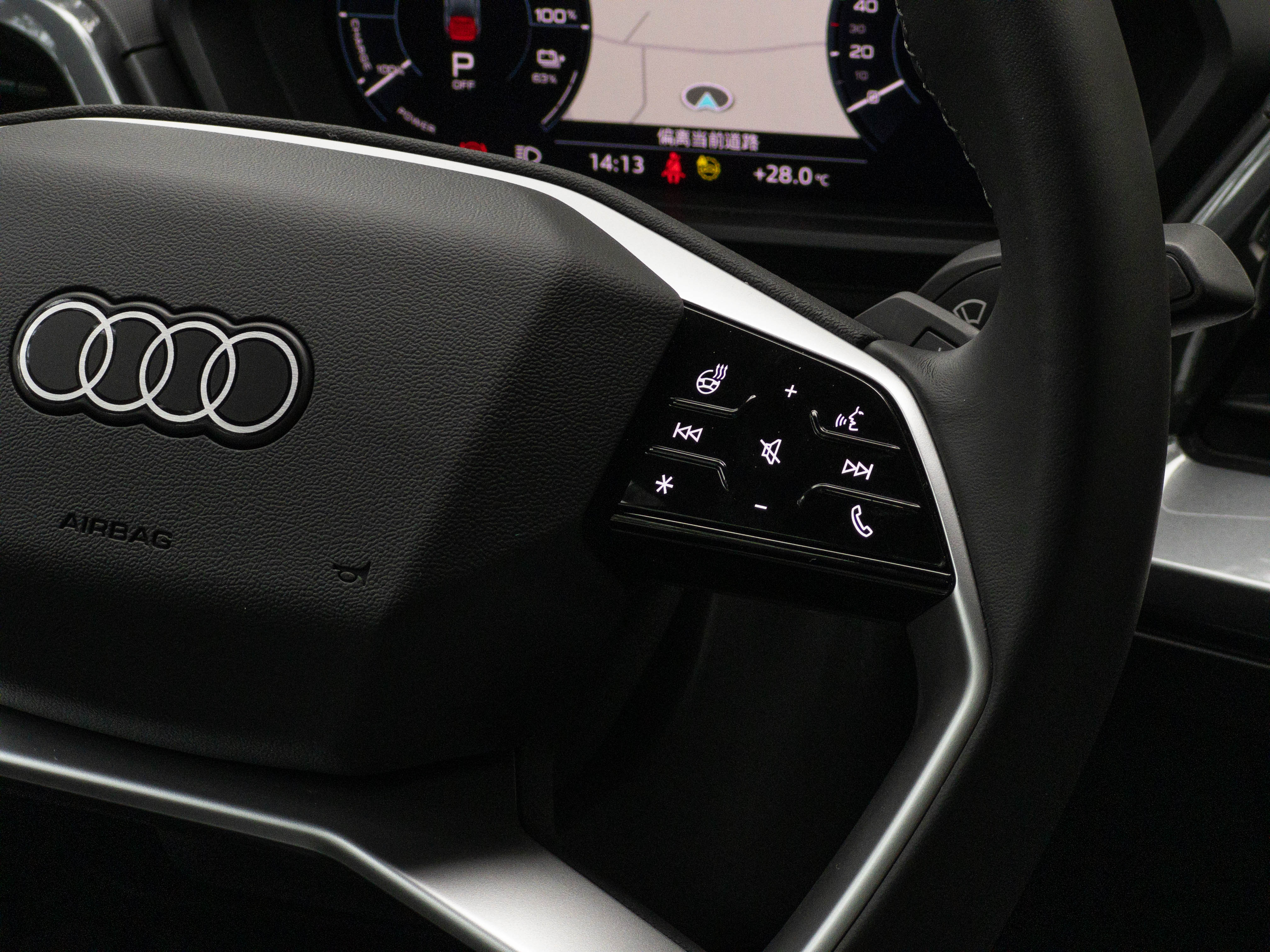
Driving with “Q5 e-tron” in the Mountains
Our test drive route is set in the mountains of Anji, Zhejiang. We departed from the hotel in the morning, drove through three winding mountain roads according to the pre-set route, and then returned to the hotel.
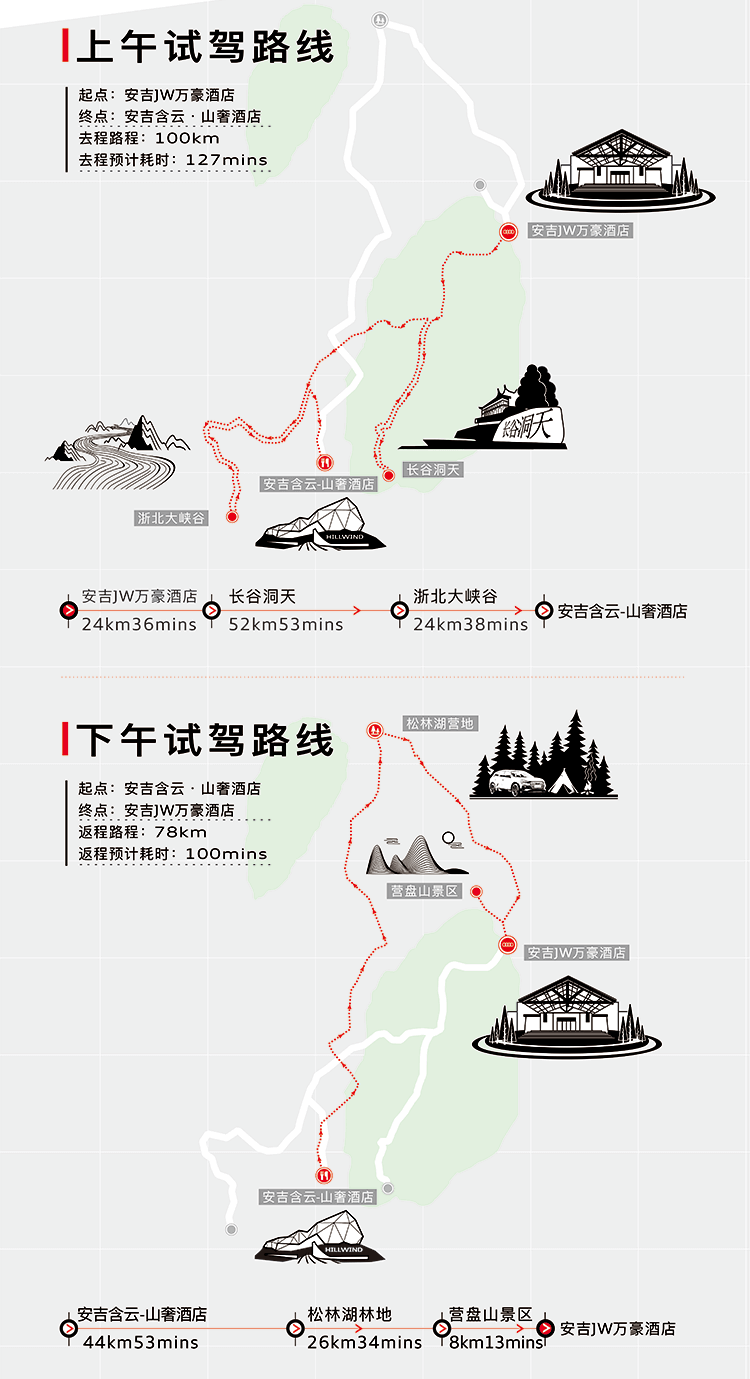
Accustomed to the fast-paced life in Shanghai, it is easy to feel uncomfortable when entering the embrace of nature in the mountains. Although this process of slowing down from fast to slow makes people feel uncomfortable, it does not produce negative feelings under the innate curiosity of humans, but more excitement. What used to be towering skyscrapers in front of us have now become towering mountains. Visually, the surrounding environment will be unfamiliar, and the sense of hearing will naturally feel excessively quiet.

Quietness Is Beautiful
As an electric vehicle, there is basically no noise inside the car, and with the quiet environment of the mountains, it’s hard to resist the temptation of playing some music to ease the atmosphere.
As for the sound system, the 50 e-tron version is equipped with a B&O sound system with 13 speakers, while the low-end 40 e-tron version is equipped with a 7-speaker configuration. But compared to other cars that always emphasize sound system brands prominently, the designer of the Q5 e-tron seems to not want to overly emphasize the sound system brand. Only when you get off the car, squat next to the door panel, and then you can vaguely see the “BANG & OLUFSEN” brand logo.
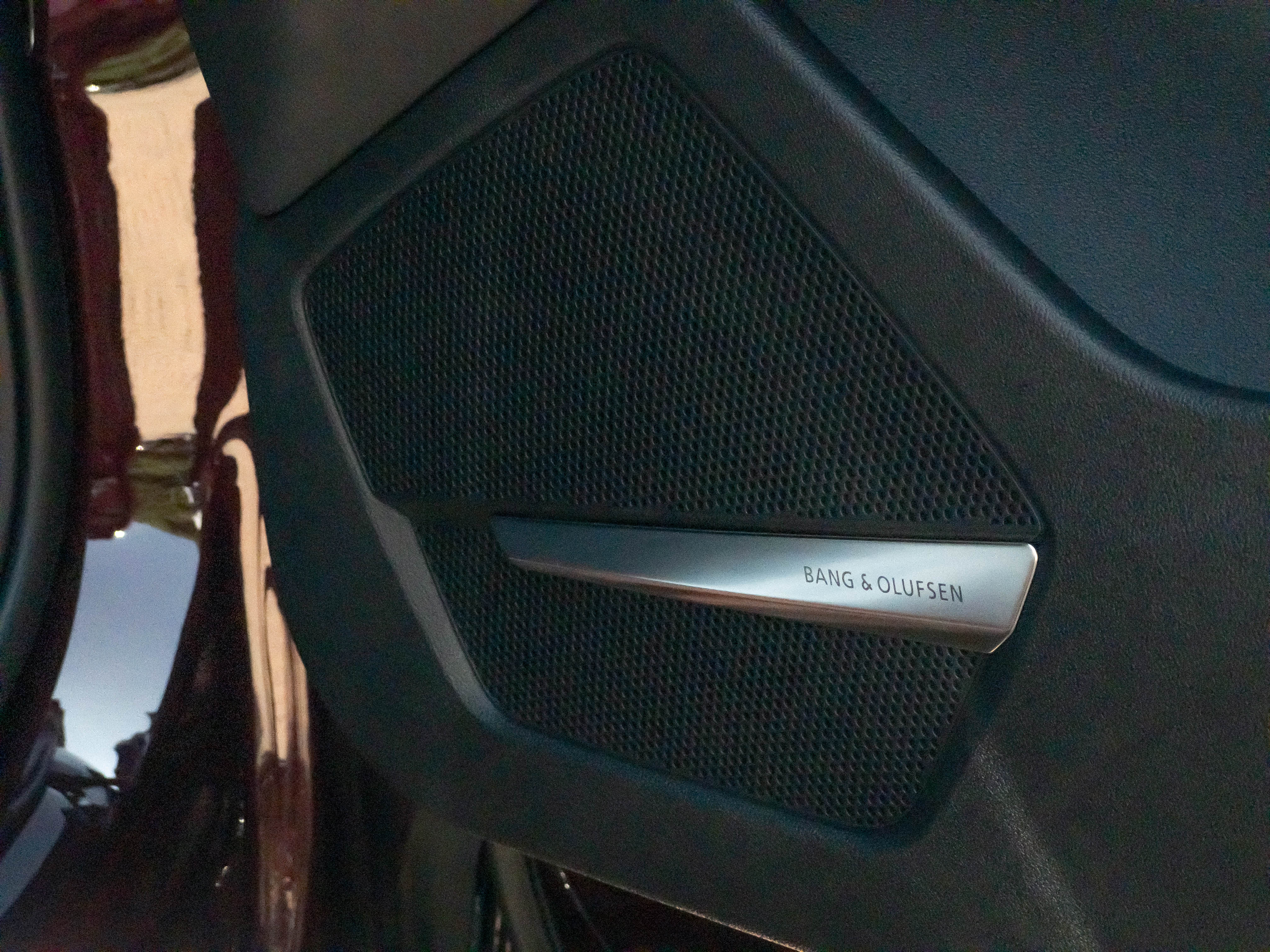
As for the sound quality, with a maximum power of 660 W, it still performs relatively well in the low-frequency part, but may be slightly inadequate in the mid-to-high frequency parts of instrumental music and vocals. When playing “Hotel California”, you can feel some distortion in the high-frequency part, so the listening experience may be slightly worse for instruments such as violin and orchestra, but it will offer a better experience when listening to songs with a strong sense of rhythm.Fortunately, the soundproofing of the car itself is done very well. With the support of double-layer soundproof glass and other sound insulation projects, you can hardly hear much noise from the outside. Therefore, you don’t need to turn up the volume too loudly to enjoy the experience brought by the surround sound system.

Good to drive, but not so comfortable to sit
When I drove the Q5 e-tron on a mountain road, I realized that SAIC Audi’s thinking about its pure electric e-tron series seemed to focus on the concept of environmentally friendly and low-carbon travel from the beginning. Especially when driving on mountain paths and listening to the whispers of birds and creeks, any sound from the car itself seems out of place. Therefore, only the pure electric e-tron seems to be able to come and go in the mountains without leaving any pollution.
Speaking of driving on mountain roads, I believe most driving enthusiasts will involuntarily get excited and think of the AE86 that only appears in their dreams. However, even though today’s car is a pure electric SUV, based on the structural design developed on the Volkswagen MEB platform, it brings a very low center of gravity to the Q5 e-tron. Coupled with the relatively hard suspension tuning, it can still give people a strong sense of driving confidence when turning in practice.

In addition, the 50 e-tron version is equipped with the DCC adaptive suspension system. When selecting comfort mode in the driving mode, it will have better stability at high speeds. When driving at high speeds on well-paved asphalt roads, it can isolate small road vibrations quite cleanly. However, today’s route is a mountain road, so let’s choose the sport mode.
On the other hand, because the orientation of this suspension is relatively hard and sporty, the riding experience in the rear seats is relatively poor compared to the front seats, and regardless of the mode, the suspension is not very gentle in handling slightly larger bumps, especially when the road is not so smooth, the high-frequency vibration transmitted to the interior of the car makes the whole riding experience quite poor.
Of course, this experience is also based on our current road conditions, which are slightly worse than the usual urban road conditions.
 In terms of gear setting, unlike previous Audi models, the gear control module of Q5 e-tron is placed below the center console, which allows gear shifting by sliding the slider forward and backward. There is a minor complaint about the material used for the panel that is frequently touched by hand, which is made of piano baking paint; it is not very wise, because fingerprints will be all over it unless the panel is carefully wiped clean before taking photos.
In terms of gear setting, unlike previous Audi models, the gear control module of Q5 e-tron is placed below the center console, which allows gear shifting by sliding the slider forward and backward. There is a minor complaint about the material used for the panel that is frequently touched by hand, which is made of piano baking paint; it is not very wise, because fingerprints will be all over it unless the panel is carefully wiped clean before taking photos.
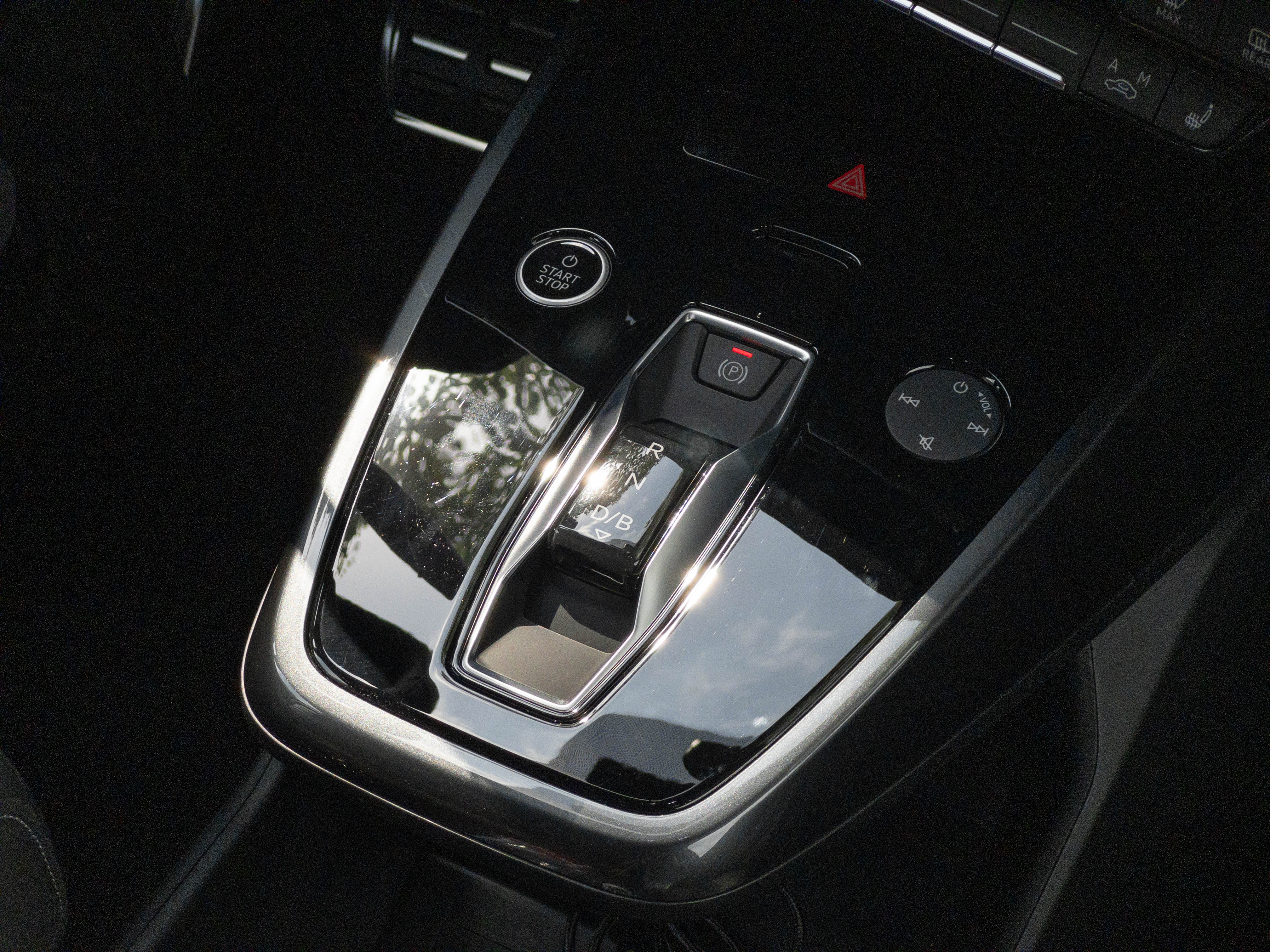
It is worth mentioning that in the energy recovery design, this car uses a similar way to BMW, with D/B two forward gears. In D mode, the energy recovery intensity can be adjusted by the left and right paddles, with a total of 4 gears. At the side of the gear displayed on the instrument is a rectangular battery-like icon that shows the current energy recovery intensity. In B mode, the vehicle automatically adjusts the energy recovery according to the speed.
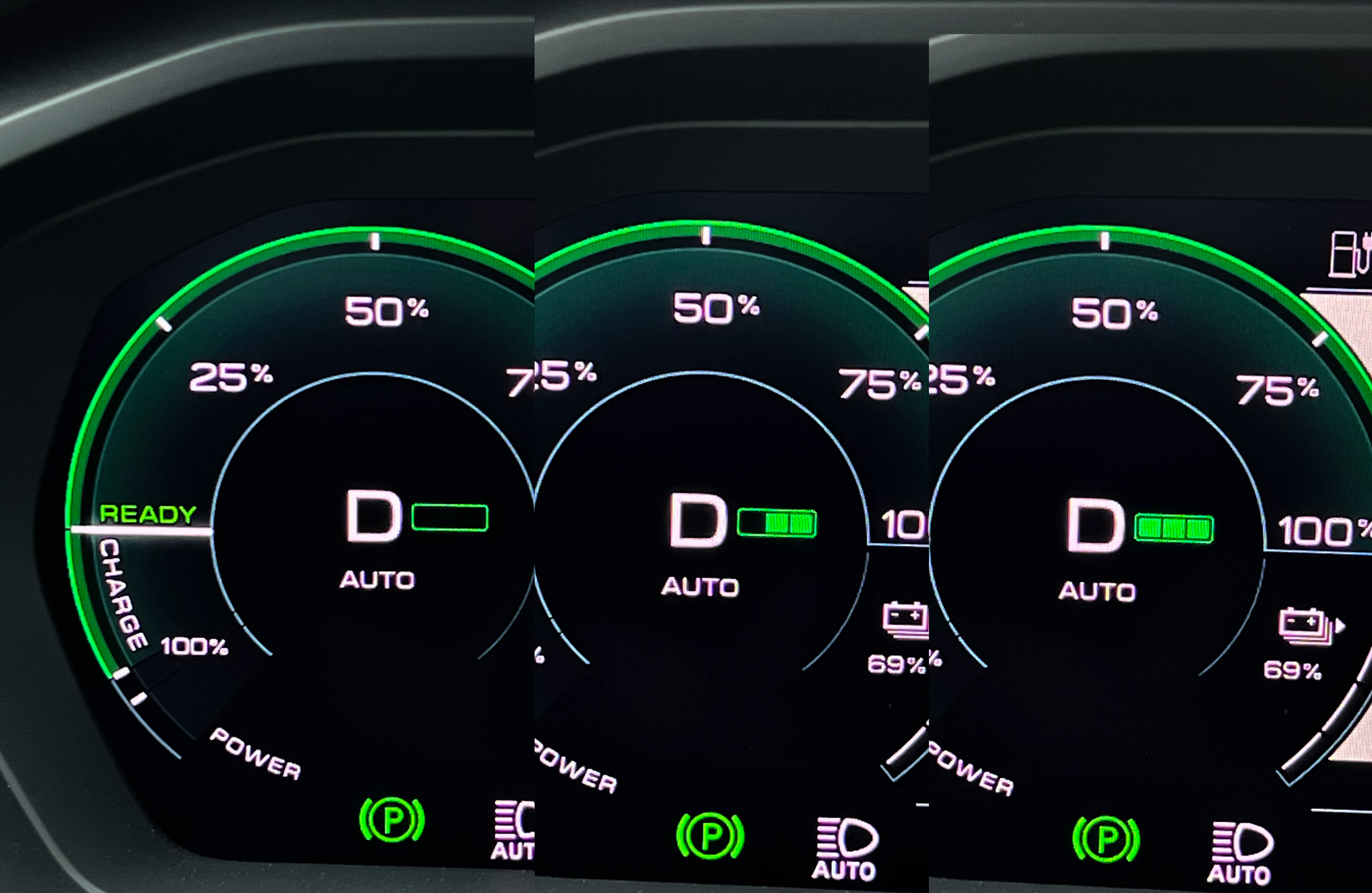
However, it is a bit confusing to me that the left “-” paddle increases energy recovery intensity, while the right “+” paddle decreases it. So, in the eyes of Audi designers, energy recovery is designed as a function of “deceleration”, and the strength is set accordingly, which corresponds to the design of the right gear for acceleration and left gear for deceleration in a normal gasoline vehicle.
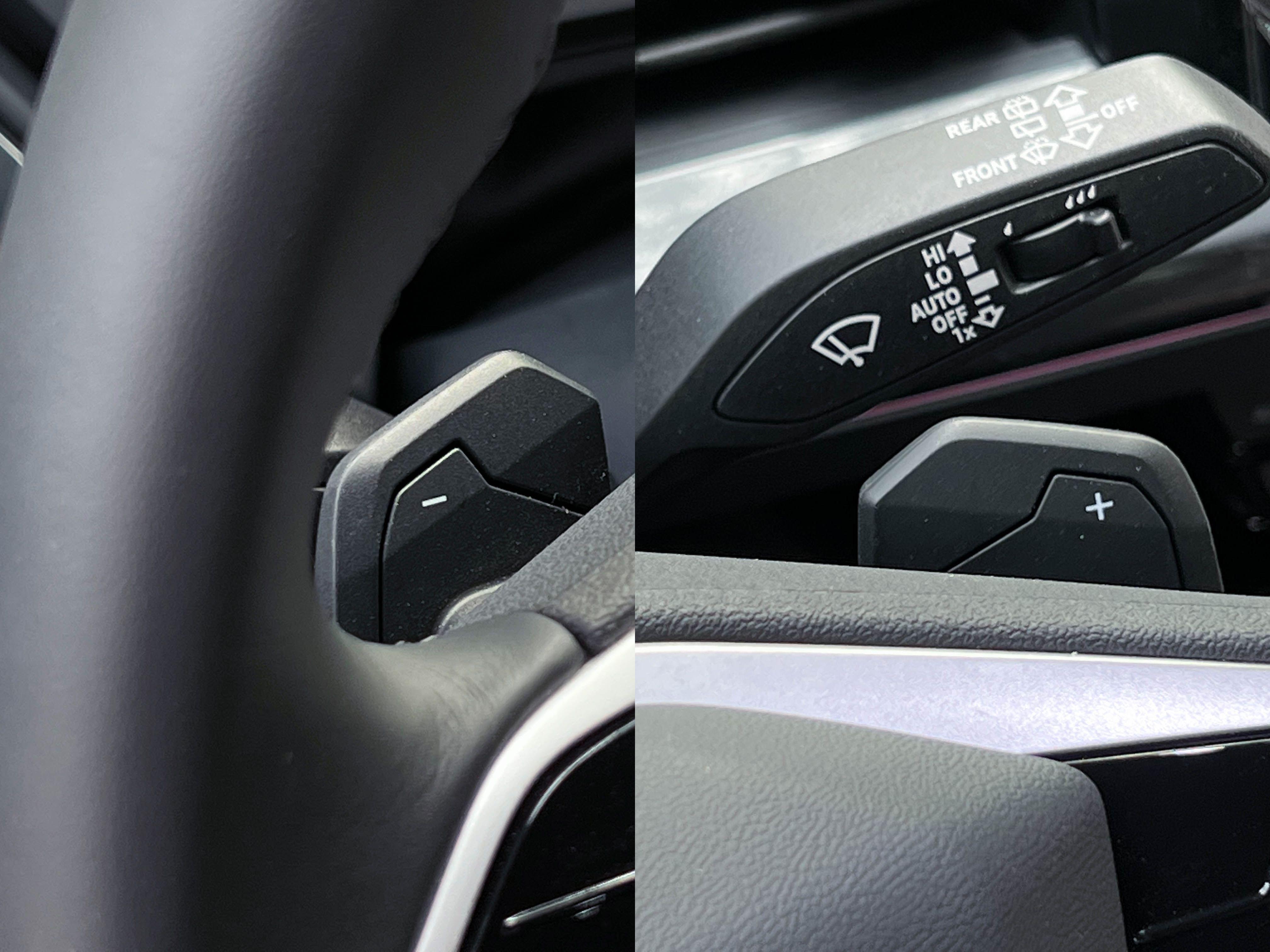
Due to the fact that Q5 e-tron is equipped with two motors in the front and rear axles and tuned by the Audi Quattro team, the overall responsiveness of the car is only delayed by 30 ms, coupled with excellent pedal tuning, this car can give you a significant sense of ease in terms of power when driving in the mountains, which cannot be compared with a gasoline vehicle.
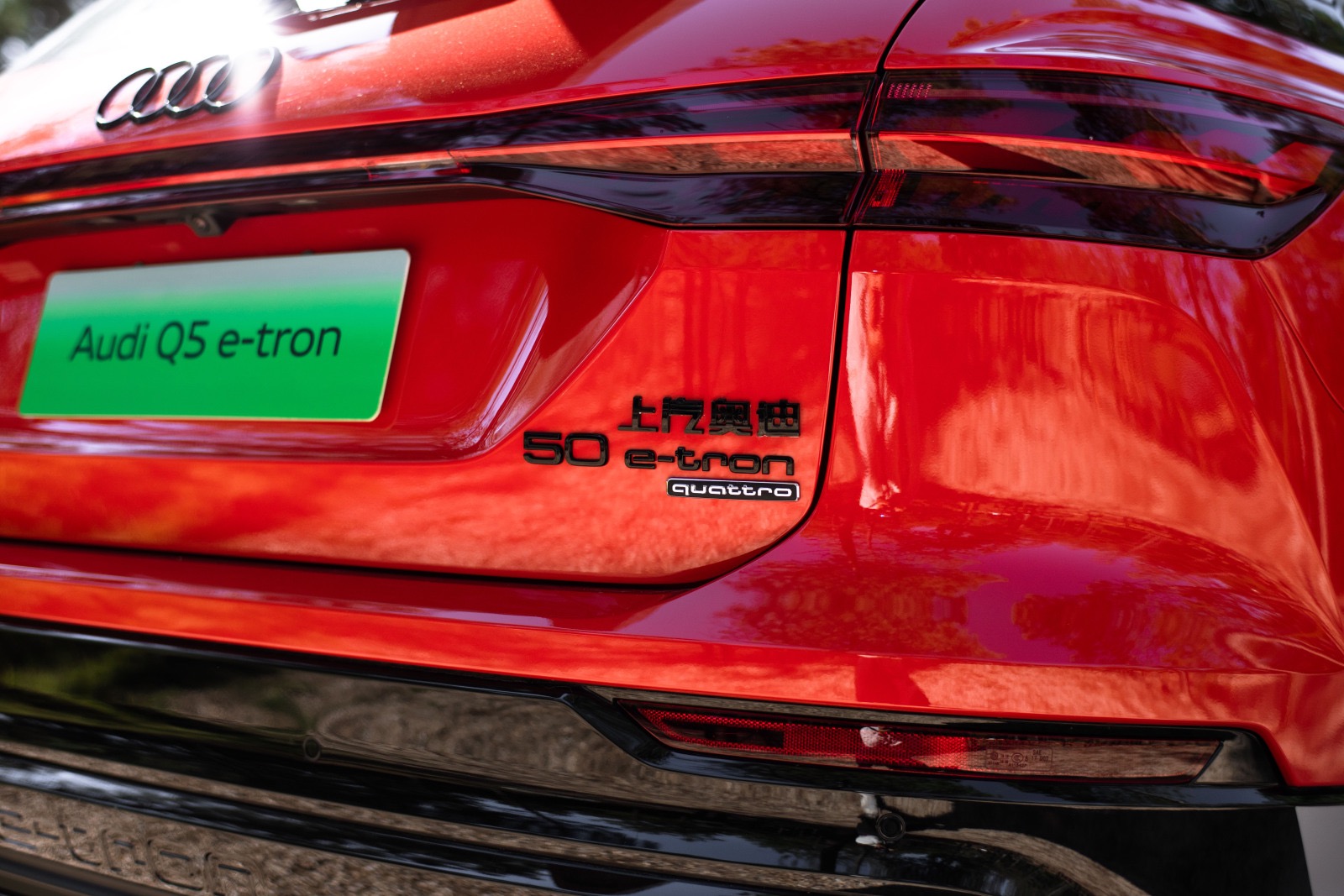
One characteristic of Audi’s calibration of the Q5 e-tron pedal is that it does not directly adapt to the very linear pedal style currently led by Tesla, but rather matches the power and pedal in a way that is more in line with the intuition of the general public when driving gasoline vehicles.
 I experienced the Audi’s understanding of the accelerator pedal on the Q5 e-tron which can offer passengers a more comfortable driving experience. At the beginning of the accelerator, the power output is weak, giving a smooth acceleration feeling when starting. While stepping on the pedal in the middle and later stage, the power output will increase quickly with the depth of the pedal. If you want the power to be more direct, simply press the pedal to the bottom, and this car will respond quickly within 30 ms, providing you with 225 kW and 460 N·m of power, with an acceleration of 0-100 km/h in just 6.7 seconds.
I experienced the Audi’s understanding of the accelerator pedal on the Q5 e-tron which can offer passengers a more comfortable driving experience. At the beginning of the accelerator, the power output is weak, giving a smooth acceleration feeling when starting. While stepping on the pedal in the middle and later stage, the power output will increase quickly with the depth of the pedal. If you want the power to be more direct, simply press the pedal to the bottom, and this car will respond quickly within 30 ms, providing you with 225 kW and 460 N·m of power, with an acceleration of 0-100 km/h in just 6.7 seconds.
Equipped with such a driving system, the Q5 e-tron provided a very flexible driving experience on our mountain test drive route, which seemed inconsistent with its SUV appearance. Of course, only those who drive can enjoy this handling feeling, and other passengers can only silently curse.
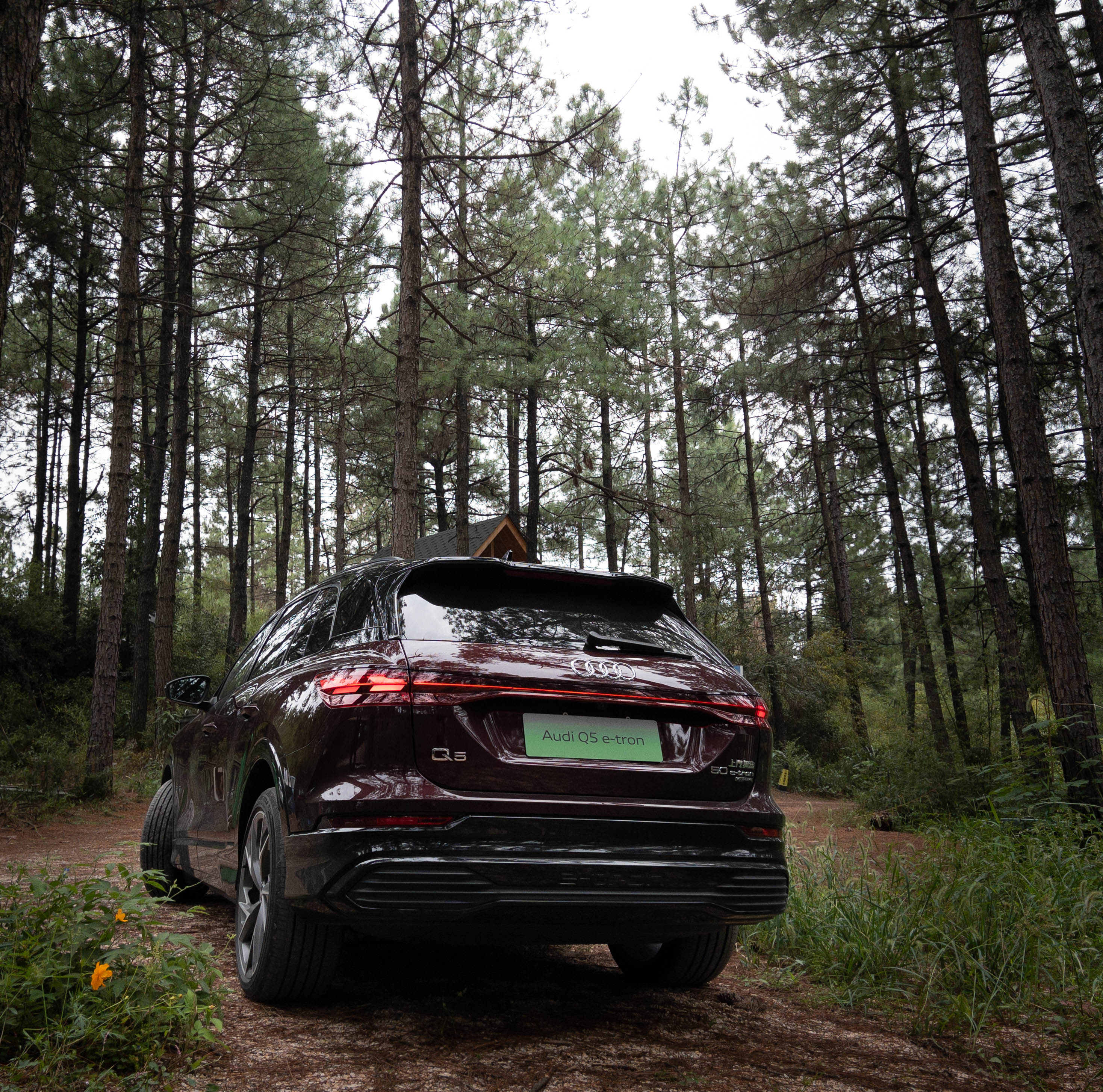
Big Space Camping is LIT!
After driving for over 100 km, we arrived at Songlinhu Campsite.

Recently, the concept of camping has become increasingly popular online, and more and more friends like to gather a few friends, prepare food and drinks, and sit on a few chairs in the suburbs of the city during holidays. The feeling of emptying yourself in nature is still very appealing.
Therefore, in such a car use scenario, space and loading capacity become very important.
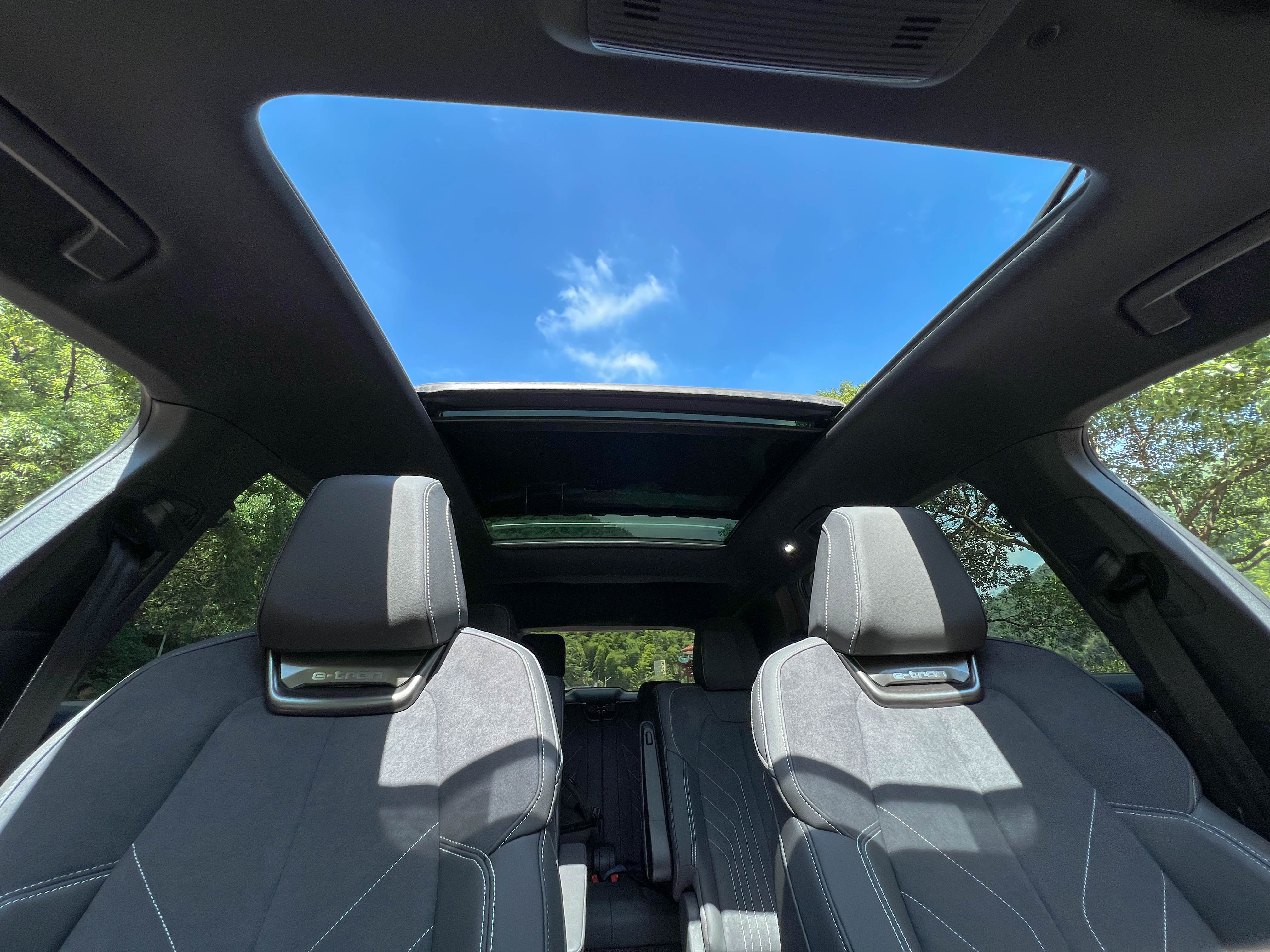
Under normal conditions, the 6 seats allow one more person to sit compared to the conventional 5-seat cars, while also ensuring good backline space for luggage. If the third-row seats are not needed, the trunk capacity can be increased to 1,825 L simply by folding them down, which can easily accommodate camping equipment.
Unfortunately, the Q5 e-tron does not have the function of V2L (vehicle-to-load). So if there is a need for power supply during camping, an additional portable power source must be brought.
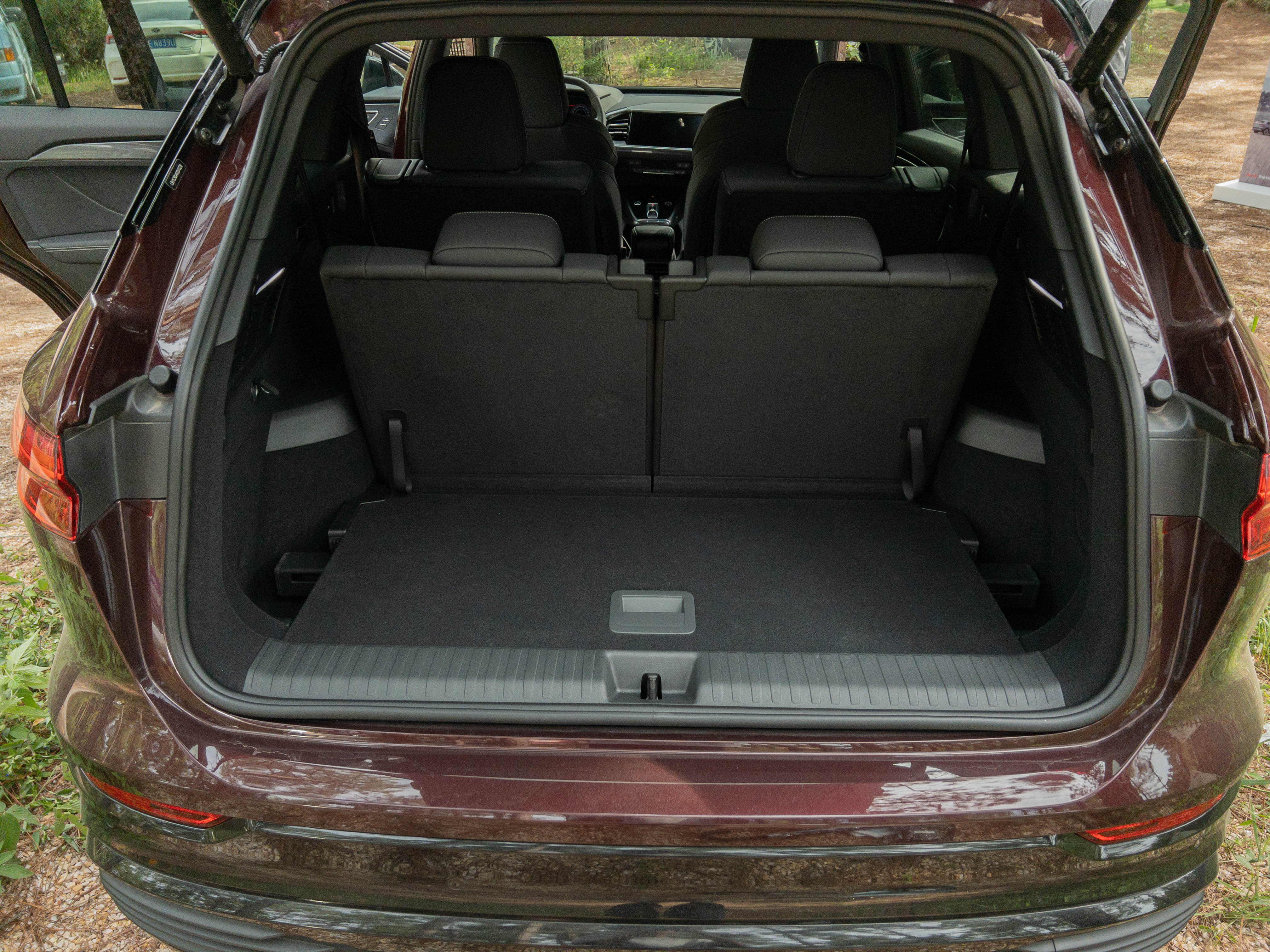
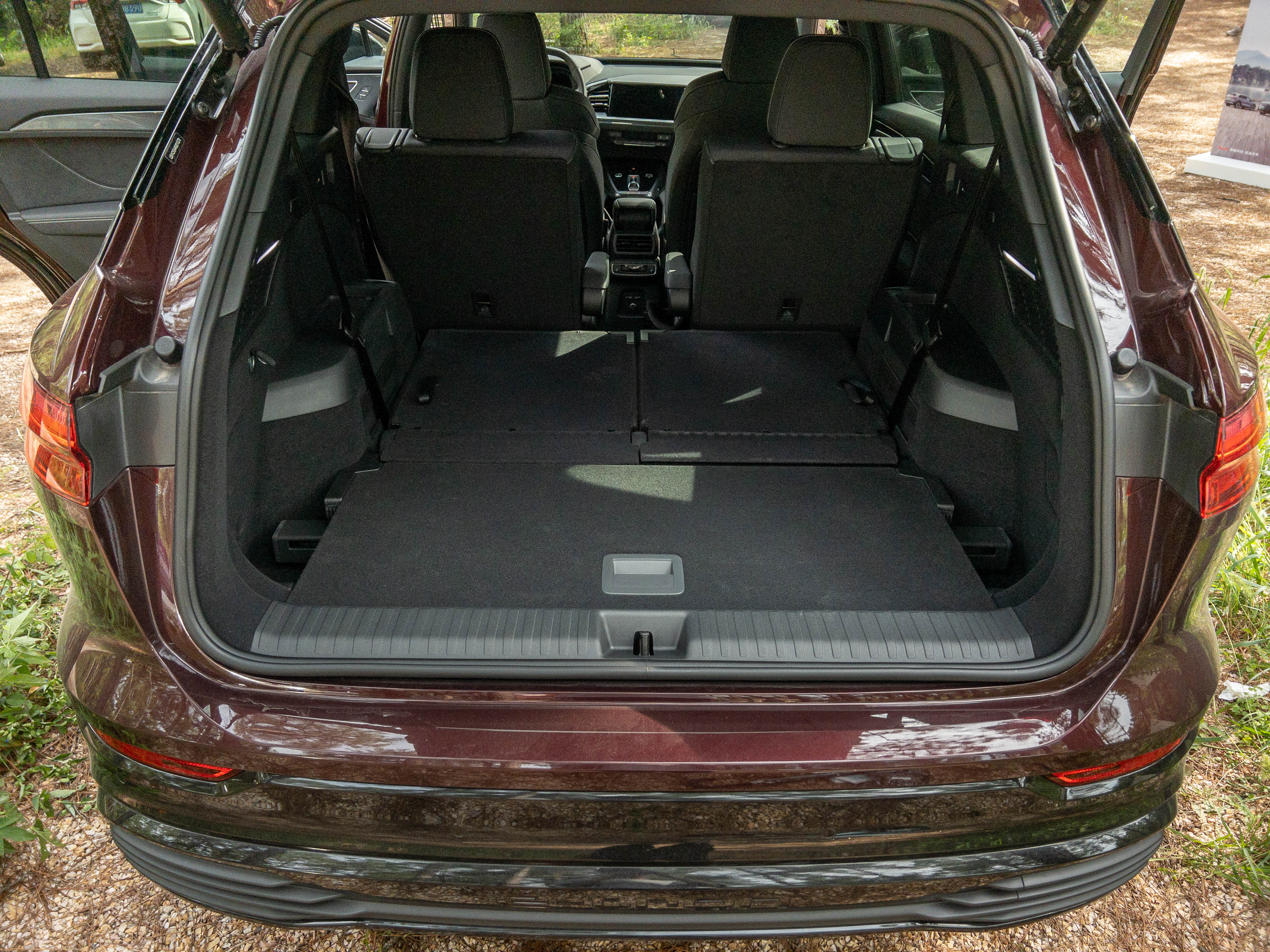 I strongly advise against sitting in the third row as an adult, at least not if you are taller than 6 feet.
I strongly advise against sitting in the third row as an adult, at least not if you are taller than 6 feet.


Sufficient Range
We drove almost 200 kilometers in a day, with most of the journey being on mountainous terrain. The resulting range isn’t very indicative, as the Q5 e-tron comes with an 83.4 kWh battery pack, and we only used half of it during our rather “aggressive” driving. Of course, this translates to a significant power consumption rate.
However, upon our return trip, we drove 20 kilometers on a mixture of high-speed urban roads with heavy traffic, with the air-conditioner on “3,” and the car slowed mainly by regenerative braking. This testing resulted in an energy consumption rate of 23 kWh/100 km, which is comparable to the standard consumption rate in similarly sized SUVs.
Taken together with the battery capacity, the estimated driving range for a similar situation is roughly 370 km.

Highly Customizable
Although the Q5 e-tron shares many of its parameters with the Volkswagen ID. 6, Audi has still managed to deliver a unique interpretation of luxury electric cars through interior and exterior design. From the use of unique materials to the treatment of lines, many aspects of the car speak of Audi’s deliberations on vehicle aesthetics.

In fact, Audi defines the Q5 e-tron as a highly customizable product, catering to the specific desires of modern young consumers. This car offers eight exterior colors, nine interior seat colors, and several styles of wheel rims and inlays. There are over 8,000 possible combinations of these decorative features alone. If optional features are considered, the total number of configurations for the Q5 e-tron is a tremendous figure.
 This level of customization is hard to find in new power players. Indeed, high levels of customization often imply high costs and unique differentiation in the market. However, with the increasing prioritization of cost and efficiency today, there are hardly any new models that seek high levels of customization. It seems that this is where the biggest differences lie between traditional luxury brands and new power players.
This level of customization is hard to find in new power players. Indeed, high levels of customization often imply high costs and unique differentiation in the market. However, with the increasing prioritization of cost and efficiency today, there are hardly any new models that seek high levels of customization. It seems that this is where the biggest differences lie between traditional luxury brands and new power players.
Finally
If you are an Audi enthusiast and looking for a visually pleasing and spacious pure electric SUV with good loading capacity, then you might want to consider adding the Q5 e-tron to your car buying list for further comparison. Additionally, its driving, space, and range dimensions are relatively balanced and provide a cost-effective alternative compared to gasoline-powered vehicles at the same price range.
This article is a translation by ChatGPT of a Chinese report from 42HOW. If you have any questions about it, please email bd@42how.com.
